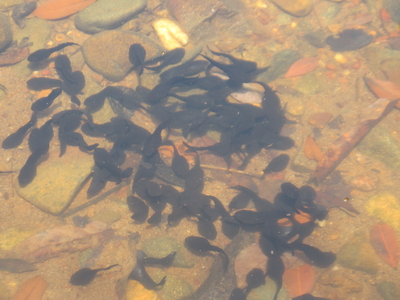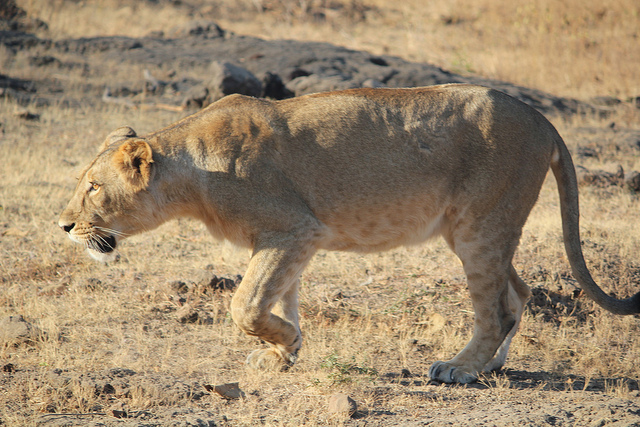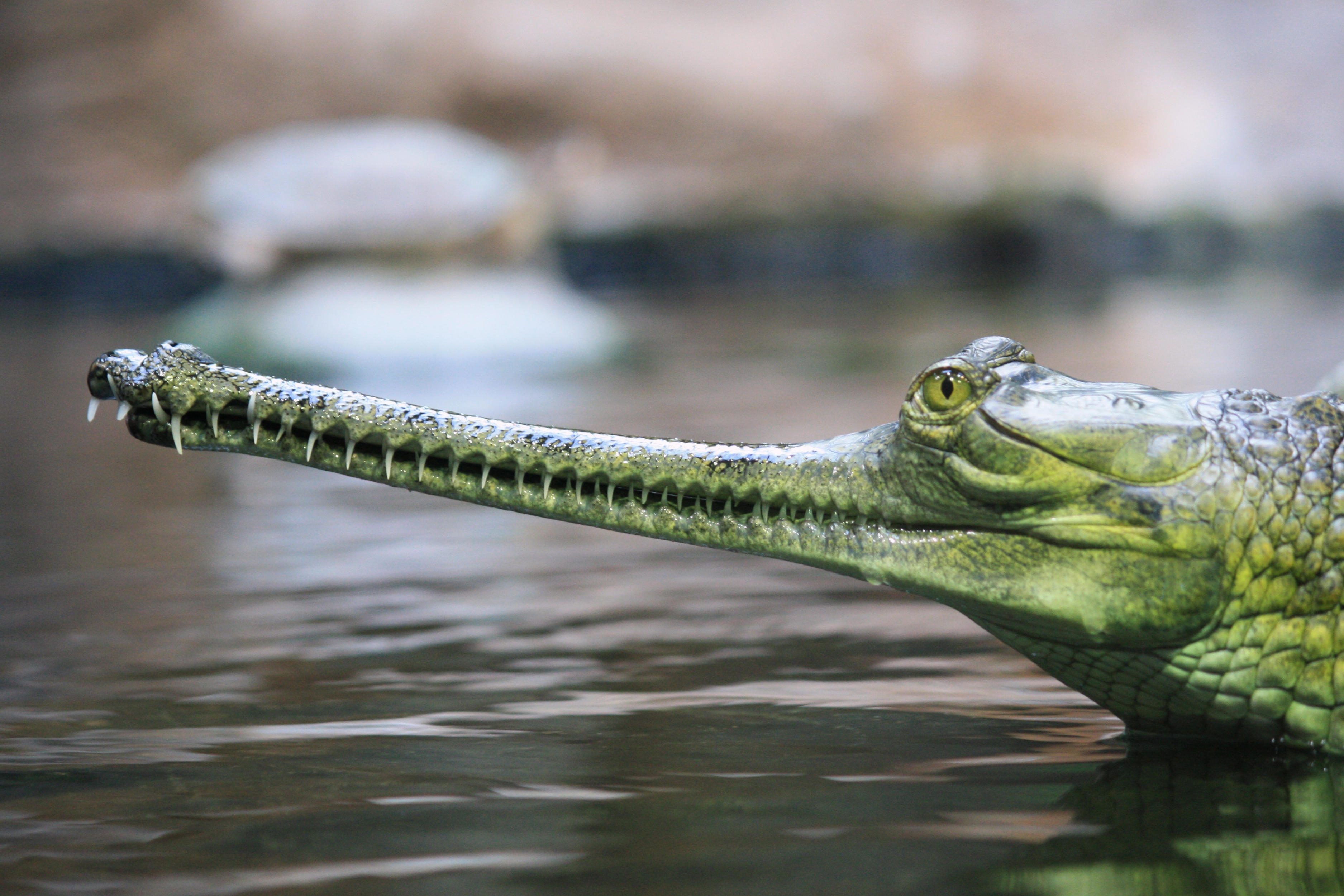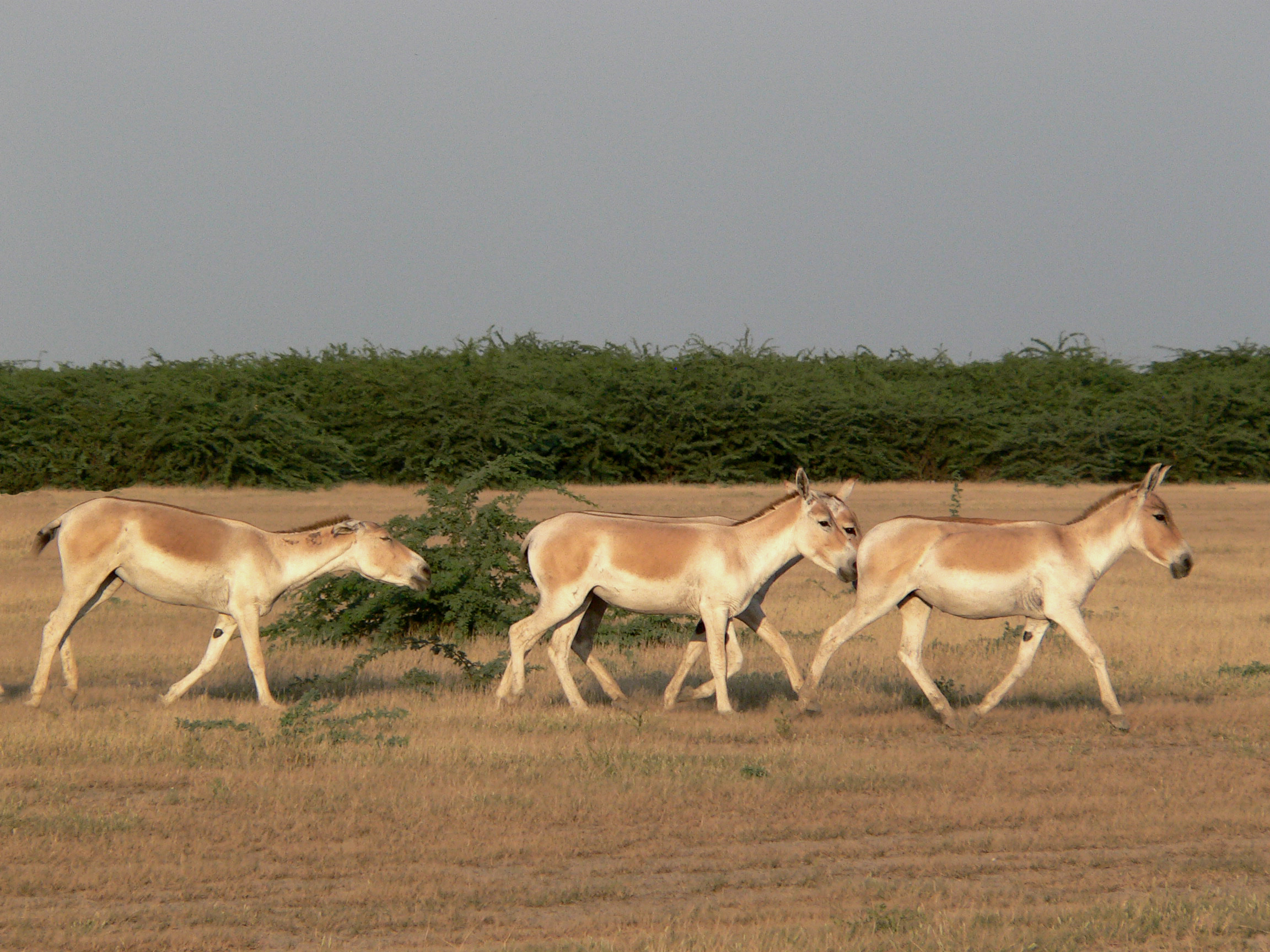This is a guest post by Madhushri Mudke from GirlGoneBirdzz.com
I sat looking at the misty mountains of the Western Ghats, appreciating the landscape of Pushpagiri Wildlife Sanctuary. A slow moving stream beside me changed its colour as the sun rose from behind the mountains shining its dim orange light. I glanced at the beautiful vegetation around the stream. The leaves are laden with silvery dew drops. The stream is home to numerous tadpoles and fish signifying the freshness of the flowing water. I was taken back to my childhood memories of catching tadpoles in my cupped hands. Since the largest tadpoles in India are those of the Bicoloured frog – we will be talking about them in this #FridayFrogFact!
The Bicoloured frog (Clinotarsus curtipes) is a medium sized (7.4 cms) frog living on the leaf litter of forest floors and is endemic to the Western Ghats. In the non-breeding season the frog dons a dual-coloured attire of olive-gray back and black sides. Whereas in the breeding season that is from June to October, it turns golden reddish yellow with a patch of red on its shoulders. According to IUCN the frog is categorised as a ‘Near Threatened’ species but this requires an update because it is distributed across many more states than the ones we already know about.

Read More: New Species Of Golden Backed Frog Discovered

- The Bicolored frog tadpoles are the largest known tadpoles in India – now isn’t that something! They can grow up to 7-10 centimetres whereas an adult frog is only about 7 centimetres.
- The mouth of this tadpole is large and has horny teeth. There can up to 15 rows of teeth split between the upper and lower half of the mouth.
- The tadpoles usually live in small tanks or slow moving streams. They swim from their birthplace to other micro habitats and keep wandering till they metamorphose into frogs.
- Studies say that predator fish might not feed on these tadpoles. The tadpoles secrete toxins which makes them unpalatable.

- These tadpoles possess a pair of paratoid glands behind the eyes. Paratoid glands are warts containing high concentrations of toxins.
- A supra-caudal gland is present above the tail.
- It has been reported that these glands secrete a white (toxic) fluid when handled which is why predators might not feed on them!
Read More: Are There Any Poisonous Frogs In India?






When I was at the Jog Falls about 20 years ago I saw some huge tadpoles in the pools above the falls. They swam in a ball, with the ones outside always trying to get into the middle, the whole mass being slightly smaller than a football. Some were totally black and some where pale green, each was about 2/3 inches long, including tail. What were they?